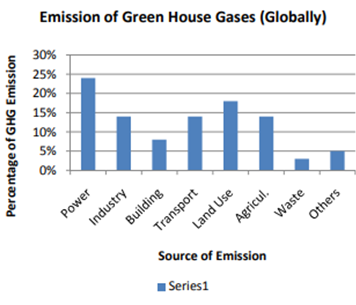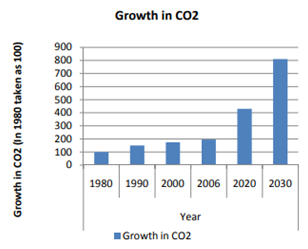We know that the use of cars are growing day by day, which is worrying on the other hand. Car pollutants cause immediate and long-term effects on the environment. Car exhausts emit a wide range of gases and solid matter, causing global warming, acid rain, and harming the environment and human health. Engine noise and fuel spills also cause pollution. Cars, trucks and other forms of transportation are the single largest contributor to air pollution in the Uzbekistan.
the use of cars can affect the following key things
1. Global Warming
2. Air, Soil and Water
3. Human Health
4. Photochemical Smog
Car pollution is one of the major causes of global warming. Cars and trucks emit carbon dioxide and other greenhouse gases, which contribute one-fifth of the Uzbekistan’ total global warming pollution. Greenhouse gases trap heat in the atmosphere, which causes worldwide temperatures to rise. Without greenhouse gases, the Earth would be covered in ice, but burning excessive amounts of fossil fuels, such as gasoline and diesel, has caused an increase of 0.6 degrees Celsius, or 1 degree F, in global temperatures since pre-industrial times, and this will continue to rise over the coming decades. Warmer global temperatures affect farming, wildlife, sea levels and natural landscapes. [1]
The effects of car pollution are widespread, affecting air, soil and water quality. Nitrous oxide contributes to the depletion of the ozone layer, which shields the Earth from harmful ultraviolet radiation from the sun. Sulfur dioxide and nitrogen dioxide mix with rainwater to create acid rain, which damages crops, forests and other vegetation and buildings. Oil and fuel spills from cars and trucks seep into the soil near highways, and discarded fuel and particulates from vehicle emissions contaminate lakes, rivers and wetlands.
Particulate matter, hydrocarbons, carbon monoxide and other car pollutants harm human health. Diesel engines emit high levels of particulate matter, which is airborne particles of soot and metal. These cause skin and eye irritation and allergies, and very fine particles lodge deep in lungs, where they cause respiratory problems. Hydrocarbons react with nitrogen dioxide and sunlight and form ozone, which is beneficial in the upper atmosphere but harmful at ground level. Ozone inflames lungs, causing chest pains and coughing and making it difficult to breathe. Carbon monoxide, another exhaust gas, is particularly dangerous to infants and people suffering from heart disease because it interferes with the blood’s ability to transport oxygen. Other car pollutants that harm human health include sulfur dioxide, benzene and formaldehyde. Noise from cars is also harmful, damaging hearing and causing psychological ill-health.
It was in Los Angeles in the 1950s when photochemical smog first came into the public spotlight. This “smog” bore some similarity (but also showed many differences) to winter-time smog, and was observed with growing frequency. The most obvious symptom was visibility degradation; hence the term smog (literally, smoke + fog) was coined. It was found to originate from a series of chemical reactions between NOx and VOCs (volatile organic compounds) in the atmosphere in the presence of intense sunlight. Motor vehicle emissions were identified as the dominant source of emission in most urban areas. The Los Angeles smog, now more generally recognized as a type of photochemical smog, is prevalent in areas with high sunlight intensities and high atmospheric levels of hydrocarbons and oxides of nitrogen. Regions with the most severe photochemical smog problems are the Los Angeles Basin in California, USA, and Mexico City, Mexico. Its presence has also been established in higher latitude regions such as in Western Europe, where most areas may be affected simultaneously during a single tropospheric ozone episode. [2]
Transport sector contributes around 14% towards the global emissions of green house gases. Carbon dioxide represents the largest proportion of basket of greenhouse gas emissions. During, the past three decades, carbon dioxide emissions from transport have increased faster than those from all other sectors and are projected to increase more rapidly in future. The Road transport alone emits around 16% of the global CO2 emissions from the world’s transport sector have increased by 36.5%.For the same period, road transport emissions have increased by 29% in industrialized countries and 61% in the other countries . The global emissions of GHG’s from different sectors have been shown in Fig. 1

Fig. 1 Emission of Green House Gases (Globally)
The CO2 emissions in India during 1980 to 2030 is shown in Fig. 2 The figure shows that the global CO2 emissions are likely to increase in India owing to its due economic growth as well rising human population. The rising trends of CO2 based on the observation using solar Infrared Spectroradiometer[7] are presented in Fig. 3. It may be seen that the trend is similar. However the observation using solar Infrared Spectrora diometer measure integrated column of CO2.[3]

This paper analyzes the impact of Transport sector on environment. The increasing demand of vehicles on account of rapidly increasing population in India is adding the load on the environment particularly in Urban area. The high growth rate of vehicular population attributes to degradation of the atmospheric conditions which are responsible for a number of diseases. The increasing concentration of CO2, CO and Nitrogen Oxides is of serious concern. Public awareness and improvement in fuel efficiency may maintain the environment sustainable.
References
- Lixin FU and Xiaoyu. XU ENVIRONMENTAL IMPACT OF MOTOR VEHICLES
- Sharma1 , Niharika Sharma. Environmental Impact of Automobiles in India R.C.
- The World Bank, ESMAP Series,2001, South Asia Urban Air Quality Management Briefing Note No.2, International Experience with CNG Vehicles
- Auto Fuel Policy, 2002, Ministry of Petroleum & Natural Gas
- Central Pollution Control Board, Series: NAAQMS/29/2006-07, September 2006, Air Quality Trends and Action Plan For Control of Air Pollution from Seventeen Cities
- Information available at the website of the World

 View this article in Russian
View this article in Russian